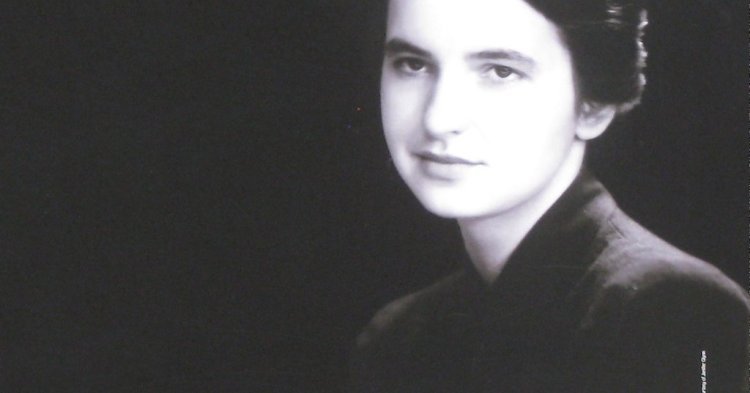Dr Rosalind Franklin is most widely known for her contributions to our current understanding of DNA and the controversy surrounding her lack of recognition for the discovery.
Born a sceptic into a Jewish family (London, 1920), Franklin had always challenged her father’s religious beliefs. She did not, however, abandon her Jewish heritage, taking classes in Hebrew and partaking in the Jewish society at university. Upon achieving her Ph.D. in 1945 for her thesis on the physical chemistry of solid organic colloids with special reference to coal at Cambridge University, she began her career as a chemist and X-Ray crystallographer across a number of institutions in both London and Paris. She died whilst she was working on deciphering the structure of the polio virus in a crystalline state. The cause is said to be a combination of issues following her decline in health due to cancer, often suggested to be associated with her exposure to x-rays.
Her most renowned achievement is undoubtedly the famous Photo 51 - her work applying her expertise in X-ray diffraction techniques to the structure of DNA, producing results that ‘’suggest a helical structure (which must be very closely packed) containing 2, 3 or 4 co‐axial nucleic acid chains per helical unit, and having the phosphate groups near the outside." This work is acclaimed as revolutionising ‘our understanding of the chemistry behind life itself’ according to the Royal Society of Chemistry (2003).
During World War II she volunteered as an air raid warden, and studied the porosity of coal using helium to determine its density, which led to the classification of coals and the accurate prediction of their performance for fuel purposes and the production of wartime devices such as gas masks.
After her time working on DNA structure at King’s College London, Franklin led pioneering work at Birkbeck College on the molecular structures of viruses, work which she introduced to and collaborated with her close colleague and principal beneficiary of her will, Aaron Klug who continued and completed it after her death. In 1982 he won a Nobel Prize in Chemistry ‘’for his development of crystallographic electron microscopy and his structural elucidation of biologically important nucleic acid-protein complexes". It is generally accepted that Franklin would have shared in the Nobel had she lived to see that day.
The debate as to whether Franklin’s contribution to our modern knowledge of DNA was sufficient or not, and whether this was an issue of sexism within the scientific world remains undecided today. Some literary works paint her as a feminist icon - a fact that her family declared Franklin would resent. According to her sister Jenifer, and close college Klug, Franklin was not a feminist in life. A 1975 article in the New Scientist, describes her story as ‘a sad one but [...] not one to advance the just cause of women in science’.
This is not to say she did not experience sexism nor unjust use of her work; Crick claimed that Franklin’s colleagues at King’s ‘’treated men and women scientists alike’’, yet later admitted to adopting ‘let’s say, a patronizing attitude towards her’. Although not a clear-cut issue of sexism, there is something untoward regarding Watson’s use of Franklin’s data to produce the Watson-Crick model.
Many believe the research was seen and used by Crick and Watson without knowledge or permission. Others assert that Wilkins, who showed this to Watson, was within his rights to the data given Franklin’s departure from the labs in King’s.
Nevertheless, Watson and Crick did not in fact cite the X-ray diffraction work of Wilkins and Franklin in their original paper, nor any other experimental evidence, but later admitted having "been stimulated by a knowledge of the general nature of the unpublished experimental results and idea’’ of Franklin and co-workers. This renders Franklin and Gosling’s publication of the DNA X-ray image as principal evidence for their model, yet particularly at the time, this was not appropriately recognised.
Additionally, there is proof that Franklin’s paper was submitted for publishing before Crick and Watson’s, yet her work was made public second and thus portrayed as secondary research merely confirming their discovery.
Today, there are many awards, dedications, publications, such as papers, books, plays and films with which to further delve into her past and posthumously recognise and celebrate her work which was largely unacknowledged during her life.


Follow the comments: |
|
